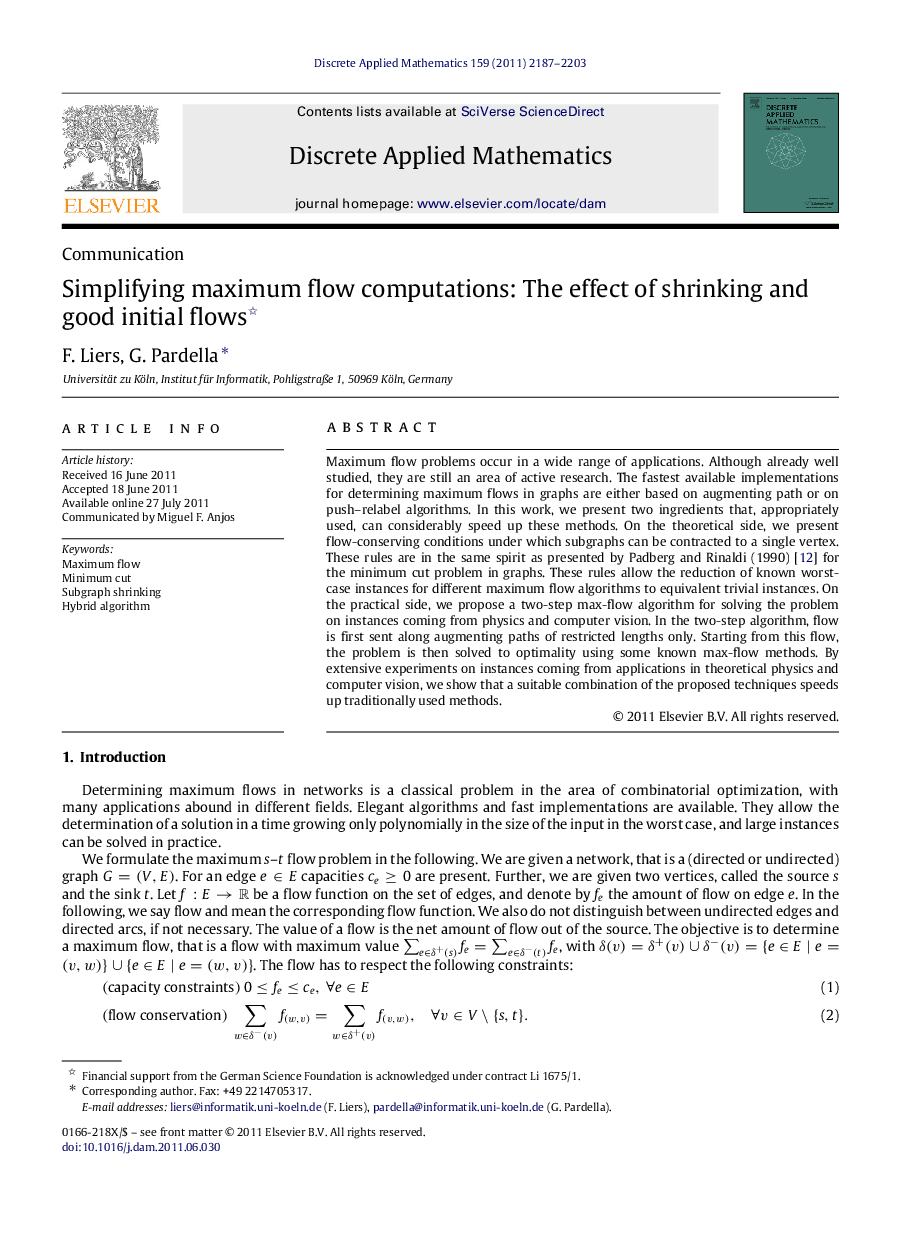| Article ID | Journal | Published Year | Pages | File Type |
|---|---|---|---|---|
| 418557 | Discrete Applied Mathematics | 2011 | 17 Pages |
Maximum flow problems occur in a wide range of applications. Although already well studied, they are still an area of active research. The fastest available implementations for determining maximum flows in graphs are either based on augmenting path or on push–relabel algorithms. In this work, we present two ingredients that, appropriately used, can considerably speed up these methods. On the theoretical side, we present flow-conserving conditions under which subgraphs can be contracted to a single vertex. These rules are in the same spirit as presented by Padberg and Rinaldi (1990) [12] for the minimum cut problem in graphs. These rules allow the reduction of known worst-case instances for different maximum flow algorithms to equivalent trivial instances. On the practical side, we propose a two-step max-flow algorithm for solving the problem on instances coming from physics and computer vision. In the two-step algorithm, flow is first sent along augmenting paths of restricted lengths only. Starting from this flow, the problem is then solved to optimality using some known max-flow methods. By extensive experiments on instances coming from applications in theoretical physics and computer vision, we show that a suitable combination of the proposed techniques speeds up traditionally used methods.
► We propose new algorithms for computing maximum ss–tt flows in graphs. ► Subgraph shrinking operations allow for considerable graph reductions. ► Worst-case instances from the literature reduce to trivial equivalent ones. ► A hybrid algorithm determines flows in specific graph classes very efficiently. ► These instances are relevant in theoretical physics and computer vision.
